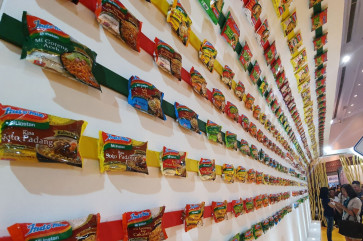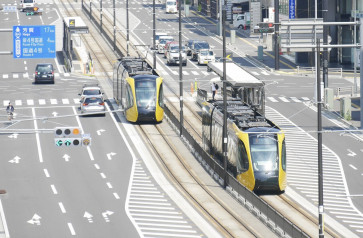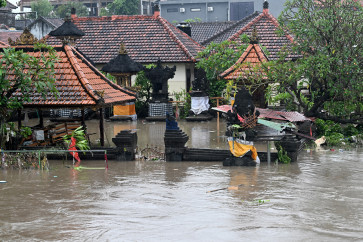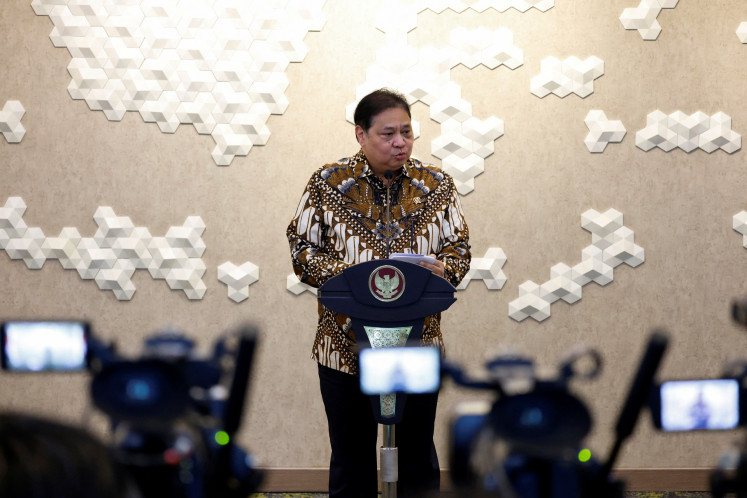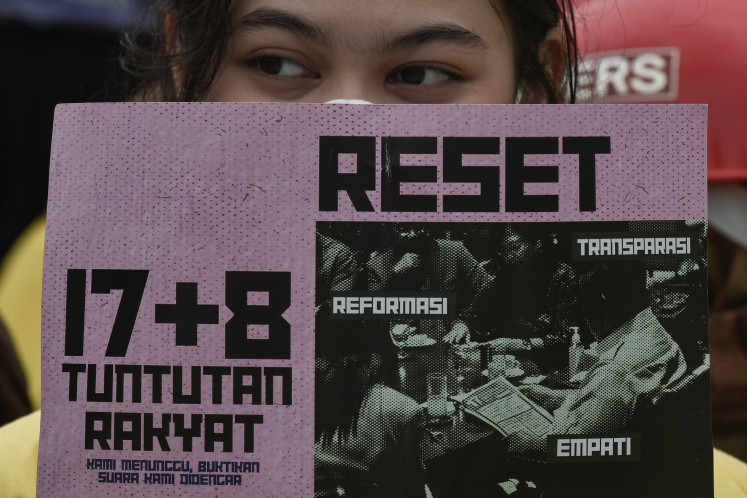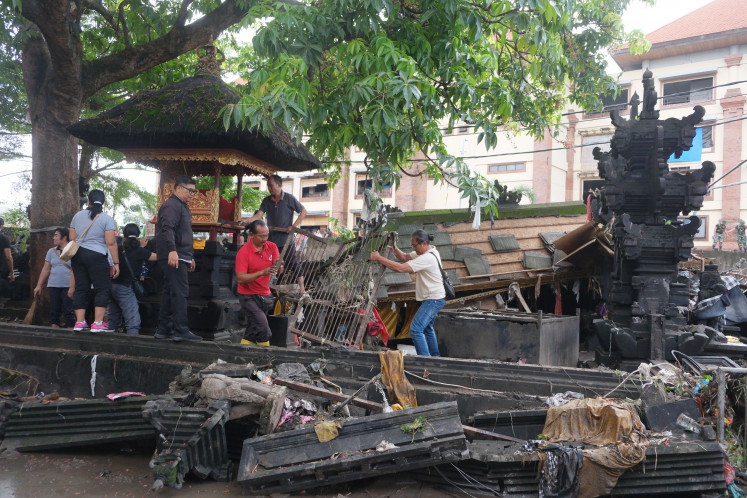Popular Reads
Top Results
Can't find what you're looking for?
View all search resultsPopular Reads
Top Results
Can't find what you're looking for?
View all search resultsA lesson learned from the Aceh peace process
To commemorate International Day of Peace, Sept
Change text size
Gift Premium Articles
to Anyone
T
o commemorate International Day of Peace, Sept. 21, United Nations (UN) Secretary-General Ban Ki-moon stated that democracy is a core value of the United Nations.
It is crucial for human rights. It provides channels for resolving differences. It gives hope to the marginalized and power to the people. But democracy does not just happen; it has to be nurtured and defended.
The commemoration of the International Day of Peace aims at promoting peace and nonviolence movements across the world.
The UN has recorded so many lessons learned when humanity builds undemocratic systems. Estimates of the number of people killed by the Khmer Rouge regime of Pol Pot in Cambodia varies between 300,000–2,000,000.
More than 9,000 people disappeared under the military government in Argentina in the late 1970s. During the rule of Idi Amin in Uganda from 1972 to 1978 more than 250,000 people were killed.
Hundreds of thousands of civilians were murdered following the Sept. 30 Movement (G30S) in 1965 in Indonesia.
Almost 2 percent of the total population of El Salvador is estimated to have died as the result of disappearance and political killings during the civil war between 1980 and 1992.
In 1994 between 500,000 — 1,000,000 people were killed in government directed genocide in Rwanda.
This list is far from complete. It does not include Bosnia, Chechnya, Kosovo, and more recent tragedies in Iraq, Afghanistan, Libya, Syria and many other places across the globe.
Rummel, in his book Death by Government (1994) has calculated that governments murdered at least 169,202,000 people in the 20th century. This is equivalent to 4,600 people killed every day during the whole 20th century.
Therefore, the 20th century has been called a century of violence, while the 19th century was the dark century, as most countries in Asia and Africa were under Western colonial rule.
Faced with these traumatizing catastrophes in human history, world leaders began to dream of a better, peaceful world, especially after World War II.
Therefore, the UN has strengthened its role to make the 21st century the century of peace. As Kofi Annan said: “In the 21st century, I believe the mission of the United Nations will be defined by a new, more profound awareness of the sanctity and dignity of every human life, regardless of race or religion.”
Although the commitment to create a century of peace was made over a decade ago, bloody tension and war still exist in various parts of the world especially in Middle-Eastern and North African countries.
The most crucial problem is the honesty of world leaders in promoting peace. Their priorities in spending their national budgets on the military is paradoxical to promoting peace.
There is a great inconsistency between what they say, what they think and what they do. It appears that is not easy for this transitional generation of leaders to change their mindset from a century of violence in the 20th century to a century of peace in the 21st century.
In a similar transitional context from a century of violence to a century of peace, during the past four decades, Indonesia’s development was based primarily on the paradigm of centralized growth and uniformity.
The huge social and cultural diversity of the country was essentially neglected. The past approach appeared to be counterproductive to the democratization and empowerment of local people.
Decades of exploitation of areas rich in natural resources, with minimum return to the host communities, contributed to the wealth and power of the central government and to alienation of the host populations. This approach triggered a separatist movement in Aceh (GAM).
To respond to this movement, the central government countered it through military operations. This then caused over 50,000 lives lost on both sides, GAM and the Indonesian Military, during three decades. This figure is equivalent to 4 or 5 lives lost every day for 30 years.
Amid such an extremely tense and bloody situation, on Dec. 26, 2004, a tsunami devastated Aceh physically, economically, psychologically and socially.
As an illustration, the tsunami absolutely devastated Aceh, leaving about 220,000 people dead or missing and more than 550,000 homeless or internally displaced.
The most deeply traumatic effects were on the condition of children. They were greatly affected by the loss of their schools and thousands of their teachers due to the tsunami and the long conflict.
These might imply the loss or the setback of one or two future generations, or even more, if no single immediate recovery mechanism could be made. This is a disaster for humanity we cannot, and should never forget.
Not so long after the tsunami, I visited Kenya and it was hard for me to believe that even with such a distance between Aceh and Kenya, over 20 hours flight from Jakarta to Nairobi, still the tsunami wave devastated parts of coastal areas of that country.
Thank God, both President Susilo Bambang Yudhoyono and then Vice President Jusuf Kalla immediately created a new turning point and transformed the multiple complexities of human suffering and tragedy into a ray of light and hope.
Facilitated by former Finnish president Martti Ahtisaari, the government of Indonesia, represented by then Law and Human Rights Minister Hamid Awaludin and Malik Mahmud, GAM Prime Minister Malik Mahmud, agreed to negotiate to end the three decades of conflict. After five rounds of peace talks between Jan. 25 and Aug. 15, 2005, the Helsinki Peace Accord could finally be adopted.
The devastating effects of the tsunami and conflict appeared to be a common unifying denominator to transform Aceh from decades of suffering to peace. Sometimes only through great suffering can we find our core humanity and personal desire for peace and dignity.
The achievement of peace in Aceh can be a real testimony for the world on how to build peace in a multidimensional-complex situation. No challenge is too difficult, no conflict is too complicated, as long as world leaders can harmonize what they think, what they say and what they do.
The writer, professor at State University of Jakarta, is former Director General of Human Rights, the Law and Human Rights Ministry, and former UNESCO consultant in Asia and the Pacific Region.


